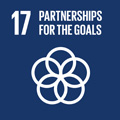- Docente: Giovanni Rocco Di Torrepadula
- Credits: 6
- SSD: ING-IND/35
- Language: Italian
- Teaching Mode: Traditional lectures
- Campus: Bologna
- Corso: First cycle degree programme (L) in Mechanical Engineering (cod. 0927)
-
from Feb 17, 2025 to Jun 11, 2025
Learning outcomes
The student will acquire knowledge of basic quantitative tools for the economic-financial analysis of business decisions and the interpretation of managerial results.
Course contents
1) Business economics within economic disciplines.
2) The problem of detecting and measuring the economic aspects of business management: the role and structure of the financial statements. The Income Statement and the Balance Sheet. The Income Statement and its classifications: the Cost of Goods Sold Income Statement, the Contribution Margin Income Statement, the Value Added Income Statement.
3) Cost analysis in support of the business decision-making process:
a. The concept of differential: differential costs and revenues;
b. Cost configurations for different decision-making problems;
c. Typical problems of choosing between multiple alternatives: only costs, differential costs and revenues;
d. Problems of choosing between alternatives: the stages of analysis;
e. The estimation of future costs and sunk costs.
4) Short-term decisions: differential costs and revenues; contribution analysis; choosing between various alternatives.
5) Long-term decisions: the stages of the investment decision-making process:
a. The concept of investment and the different types of investments;
b. Capitalization and discounting: elements of financial mathematics;
c. Determining the value generated by an investment: the net present value method;
d. The stages of the investment decision-making process;
e. The elements necessary for the economic evaluation of an investment project: the required return, the economic life of the project, relevant cash flows;
f. Problems in determining cash flows;
g. Overview of other investment evaluation methods: internal rate of return, payback period, average accounting return.
Readings/Bibliography
R.N. Anthony, D.F. Hawkins, D.M. Macrì, K. A. Merchant, Il Bilancio. Analisi economiche per le decisioni e la comunicazione della performance (15° edition), McGraw-Hill, Milano 2021. (except chapter 10)
R.N. Anthony, D.F. Hawkins, D.M. Macrì, K.A. Merchant, Sistemi di controllo: analisi economiche per le decisioni aziendali (15° edition), McGraw-Hill, Milano 2021. (chapter 1, 2, 3, 4, 5, 14, 15, 16, 17 e 19).
Teaching methods
Traditional face-to-face lectures, practical exercises, and case studies.
Attendance is recommended for a better understanding of concepts and notions, but it does not affect the final evaluation process.
Assessment methods
The final exam consists of a written test at the end of the course lasting 2 hours.
The exam includes a variable number of numerical exercises (ranging from two to three) and a section of multiple-choice questions covering the theoretical topics.
The exam schedule is made available well in advance on the University of Bologna's AlmaEsami web platform and communicated through the AlmaEsami service (http://almaesami.unibo.it ).
Exam registration is done exclusively through the AlmaEsami service.
Teaching tools
The exercise materials will be made available online before the practical sessions, when possible.
Some additional exercises for exam preparation will be made available during the course.
Links to further information
Office hours
See the website of Giovanni Rocco Di Torrepadula
SDGs



This teaching activity contributes to the achievement of the Sustainable Development Goals of the UN 2030 Agenda.
